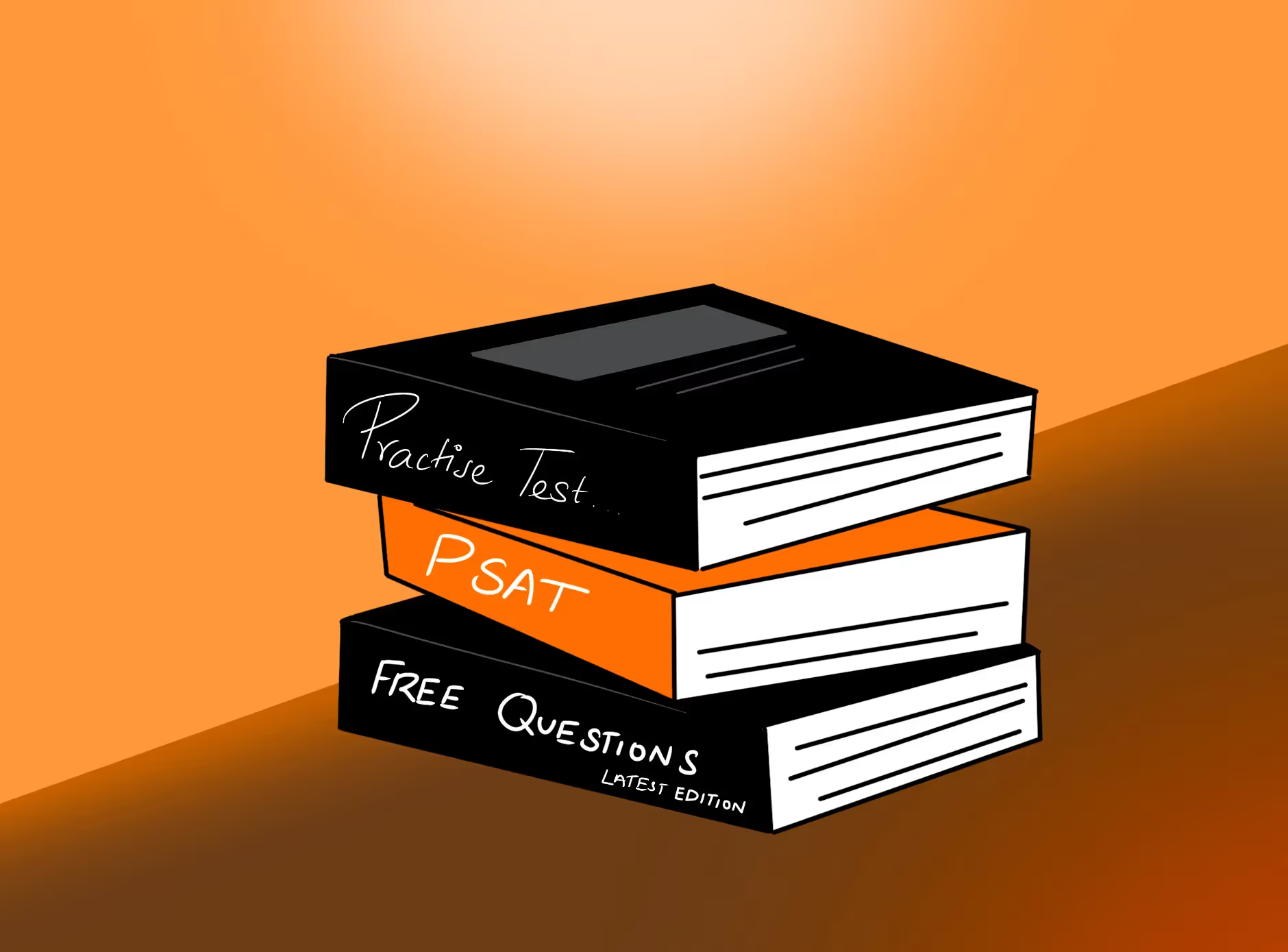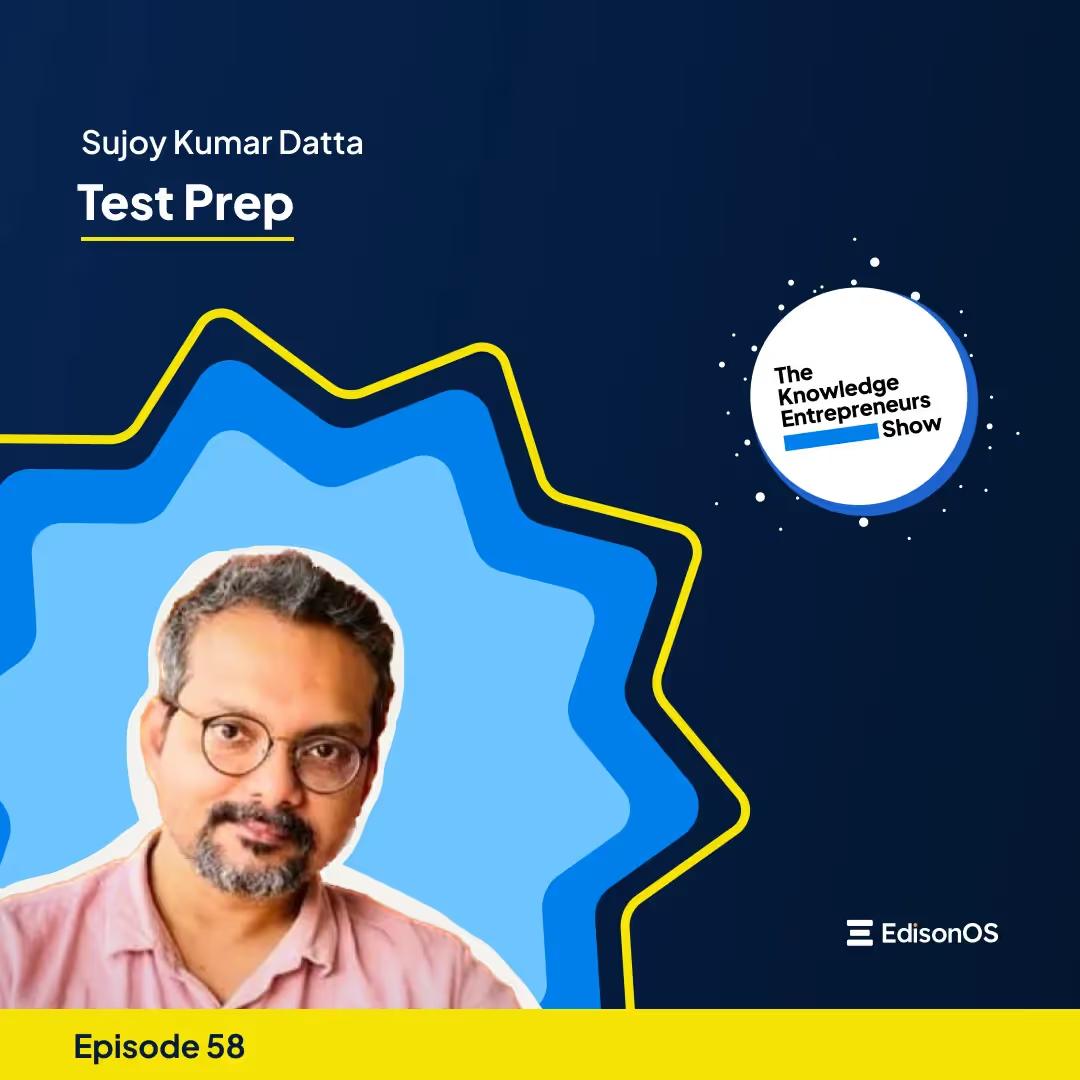




Key Takeaways
- PSAT: More Than a Practice Test – The PSAT serves as both a diagnostic tool and a gateway to college scholarships, making effective preparation critical to future academic success.
- Practice Tests Are Essential – Practice tests, including free questions and full-length exams, help students simulate real test conditions, identify strengths and weaknesses, and improve time management.
- Balanced Preparation Leads to Success – Combining targeted practice with comprehensive full-length tests, while tracking progress, ensures a holistic and adaptable approach to PSAT prep.
Introduction
As students traverse the academic landscape on their journey to higher education, the PSAT (Preliminary Scholastic Aptitude Test) stands as a pivotal checkpoint. Much more than a mere precursor to the SAT, the PSAT serves as a valuable tool for gauging college readiness, identifying academic strengths and weaknesses, and unlocking a pathway to future success. In this dynamic educational landscape, effective PSAT preparation becomes a cornerstone for students aspiring to navigate the complexities of standardized testing and chart their course toward academic excellence.
At the heart of this preparation lies a potent ally: practice tests. These mock assessments are not just a routine component but rather the linchpin of a strategic and well-rounded study approach. By delving into the nuances of the PSAT through intentional practice, students not only familiarize themselves with the exam's format but also cultivate the skills necessary to conquer its challenges. In this brief overview, we will unravel the importance of PSAT preparation and shine a spotlight on the pivotal role that practice tests play in the journey to PSAT success.
The Significance of PSAT Preparation
The PSAT is more than a dry run for the SAT; it serves as a diagnostic tool that provides students with invaluable insights into their academic readiness for college-level coursework. Beyond its diagnostic function, a strong performance on the PSAT can open doors to National Merit Scholarship opportunities, adding a tangible incentive to excel on the exam.
Emphasizing the Role of Practice Tests
Practice tests emerge as the linchpin of effective PSAT study for several compelling reasons. They offer students a tangible simulation of the test environment, enabling them to acclimate to the timed nature of the exam and refine their test-taking strategies. Moreover, practice tests function as diagnostic tools, illuminating areas of strength and highlighting domains that demand focused improvement. By engaging with these mock assessments, students not only demystify the exam's intricacies but also cultivate the resilience and adaptability necessary for success on test day.
In the subsequent sections of this exploration, we will delve deeper into the types of practice tests—free questions and full-length tests—and unravel the unique advantages each brings to the table. Through this comprehensive approach, students can transform the daunting prospect of PSAT preparation into a strategic and empowering journey, armed with the tools and insights needed to conquer the challenges that lie ahead.
Understanding the Landscape
The Significance of PSAT Practice
1. Exploring the Purpose of the PSAT
The PSAT is not merely a precursor to the SAT; it is a diagnostic tool designed to assess students' preparedness for the rigors of college-level academics. As a standardized test, the PSAT serves as a benchmark, offering students and educators valuable insights into the areas of strength and weakness in a student's academic arsenal. It goes beyond a numerical score; it acts as a compass, guiding students toward targeted areas of improvement.
2. Importance in College Readiness
College readiness is a multifaceted concept encompassing not only academic prowess but also the ability to navigate the demands of higher education. The PSAT, in its essence, gauges a student's readiness for the intellectual challenges that await in college. By assessing critical reading, writing, and mathematical skills, the PSAT offers a comprehensive snapshot of a student's academic acumen.
3. Highlighting Practice Tests for Skill Development
Practice tests are the crucible in which academic skills are honed and refined. They serve as dynamic laboratories where students can experiment with different strategies, grapple with challenging questions, and fine-tune their problem-solving techniques. Beyond the numerical scores they provide, practice tests contribute significantly to skill development by fostering a familiarity with the test format and nurturing the cognitive abilities crucial for success in college-level coursework.
Different Types of PSAT Practice
1. Differentiating Between Free Questions and Full-Length Tests
In the expansive realm of PSAT preparation, two primary types of practice emerge: free questions and full-length tests. Free questions are bite-sized challenges that allow students to target specific skill areas, providing a focused approach to improvement. On the other hand, full-length tests offer a holistic simulation of the actual exam environment, complete with time constraints and the array of question types one can expect on test day.
2. Advantages of Free Questions
Free questions are akin to targeted exercises, allowing students to zero in on specific areas of weakness. They provide flexibility, enabling learners to customize their practice sessions according to their individual needs. Whether it's mastering a particular math concept or refining reading comprehension skills, free questions offer a nuanced approach to skill enhancement.
3. Advantages of Full-Length Tests
Full-length tests, by their comprehensive nature, provide a macroscopic view of a student's overall preparedness. They mimic the actual test conditions, helping students build endurance, manage time effectively, and acclimate to the ebb and flow of the exam. Full-length tests offer a holistic approach, ensuring that students are not only adept at individual skills but also capable of seamlessly integrating them in a real-world testing scenario.
In the upcoming sections, we will unravel the intricacies of each type of practice, examining how students can strategically incorporate both free questions and full-length tests into their PSAT preparation toolkit. This exploration aims to empower students with the knowledge needed to navigate the multifaceted landscape of PSAT readiness successfully.
Free Questions - Building Foundations
Exploring Free Practice Questions
1. Introduction to Free PSAT Practice Questions
Embarking on the journey of PSAT preparation often begins with the exploration of free practice questions, readily available across various online platforms. These bite-sized challenges offer a glimpse into the diverse array of question types that make up the PSAT. Whether it's tackling math problems, unraveling complex reading passages, or refining grammar skills, free practice questions serve as the initial stepping stones in the path towards mastery.
2. Benefits of Incorporating Free Questions
The advantages of incorporating free questions into your study routine are manifold. Firstly, they provide a low-stakes environment for experimentation, allowing students to test strategies and approaches without the pressure of a full-length exam. Secondly, the variety of question types helps build a robust foundation across all sections of the PSAT. Lastly, the accessibility of these questions fosters a consistent and adaptable study routine, fitting seamlessly into the busiest of schedules.
Leveraging Free Questions for Skill Identification
1. How Free Questions Help Identify Strengths and Weaknesses
Free practice questions act as diagnostic tools, unveiling the intricacies of a student's academic repertoire. By engaging with these questions, individuals gain insights into their strengths, showcasing areas where they excel effortlessly. Simultaneously, they bring weaknesses to light, highlighting specific concepts or question types that may require additional attention. This self-awareness becomes the compass guiding subsequent study sessions.
2. Strategies for Utilizing Free Questions
Effectively leveraging free questions involves a strategic approach. Begin by categorizing questions based on difficulty and subject matter. Identify patterns in the types of questions that pose challenges. Subsequently, allocate focused study time to address these weak points. The iterative process of engaging with free questions, analyzing performance, and adjusting study strategies forms the crux of targeted improvement.
Online Platforms Offering Free PSAT Questions
List and Brief Reviews of Reputable Online Platforms
- Khan Academy:
- A comprehensive platform offering a wide array of free PSAT practice questions.
- Interactive lessons accompany the questions, providing detailed explanations for correct and incorrect answers.
- College Board's Official Website:
- The official source for PSAT practice questions.
- Authentic questions created by the test makers, ensuring a close match to the actual exam.
- Princeton Review:
- Known for its quality test prep materials, Princeton Review provides free PSAT questions online.
- The platform offers detailed performance analytics to track progress.
- McGraw-Hill Education:
- McGraw-Hill Education's online resources feature free PSAT questions.
- Adaptive learning technology tailors practice sessions to individual strengths and weaknesses.
Exploring these platforms not only grants access to a plethora of free questions but also introduces students to varied question styles and formats. Selecting platforms that align with individual learning preferences enhances the effectiveness of free question practice.
Full-Length Tests - Simulating the Real Experience
The Role of Full-Length PSAT Tests
1. Discuss the Significance of Full-Length Tests
Full-length PSAT tests play a pivotal role in transforming theoretical preparation into a tangible skill set ready for the rigors of test day. The significance lies in their ability to closely mimic the actual exam experience, allowing students to navigate the nuances of the test format, question types, and time constraints. These comprehensive assessments serve as the ultimate litmus test, providing a holistic evaluation of a student's readiness for the PSAT.
2. Importance of Timing and Stamina
The true essence of the PSAT emerges when timing and stamina become integral components of full-length test practice. The timed nature of the exam demands not only content mastery but also the ability to allocate time judiciously across sections. Full-length tests act as training grounds, honing a student's stamina to endure the entire testing duration while maintaining focus and accuracy—a skill crucial for success on test day.
Analyzing Full-Length Test Results
1. How to Interpret and Learn from Your Performance
Analyzing full-length test results is a nuanced process that extends beyond the numerical score. Start by identifying patterns in the types of questions that posed challenges. Delve into the sections where time management proved tricky. Pinpointing these specifics allows for a targeted approach to improvement. Additionally, pay attention to the consistency of performance across sections, unveiling potential strengths and weaknesses unique to each domain.
2. Strategies for Adjusting Your Study Plan
The insights gained from test analysis should inform the adjustment of your study plan. If time management emerged as a stumbling block, incorporate timed practice sessions into your routine. For content-specific challenges, allocate focused study time to shore up those weaknesses. A dynamic study plan that evolves based on performance analysis ensures a strategic and adaptive approach to PSAT preparation.
Recommended Resources for Full-Length PSAT Tests
List of Reliable Sources for Practice Tests for PSAT
- Kaplan:
- Known for its comprehensive test prep materials, Kaplan offers full-length PSAT practice tests online.
- The platform provides detailed performance reports and explanations for answers.
- Princeton Review:
- Princeton Review extends its offerings to full-length PSAT practice tests.
- Realistic simulations of the exam environment aid in building test-day confidence.
- College Board's Official PSAT Practice Tests:
- The gold standard in PSAT preparation, official practice tests from the College Board mirror the actual exam.
- Authenticity ensures an accurate representation of the test day experience.
- Barron's Test Prep:
- Barron's offers a collection of full-length free PSAT practice tests.
- The platform emphasizes detailed answer explanations and strategic test-taking tips.
Selecting from these reputable sources not only ensures authentic practice material but also aligns with the test format endorsed by the creators of the PSAT. These resources are invaluable assets for students seeking to hone their skills and familiarize themselves with the nuances of the actual exam.
Integrating Practice Tests into Your Study Plan
Creating a Study Schedule
1. Tips on Incorporating Practice Tests
- Regularity is Key:
- Integrate practice tests into your routine consistently. Schedule them at intervals to ensure steady progress without burnout.
2. Variety Matters:
- Balance the types of practice tests—mix free questions, full-length tests, and content review. This diverse approach hones different skills and prevents monotony.
- Simulate Test Conditions:
- Replicate the test environment as closely as possible. Choose a quiet space, adhere to time constraints, and eliminate distractions to simulate the actual testing experience.
- Strategic Timing:
- Consider taking full-length tests at various times of the day to identify your optimal testing time. Adapt your study schedule accordingly.
- Review Thoroughly:
- Allocate dedicated time for post-test analysis. Review both correct and incorrect answers, understand the reasoning behind each, and identify areas for improvement.
2. Benefits of PSAT Practice Questions
- Free Questions for Precision:
- Utilize free questions to target specific weaknesses identified through full-length tests.
- These focused exercises enhance precision in addressing individual skill gaps.
- Full-Length Tests for Holistic Evaluation:
- Integrate full-length tests to gauge overall readiness and endurance.
- Use these assessments to evaluate time management, stamina, and the ability to transition between different sections seamlessly.
- Content Review for Mastery:
- Embed content review sessions within your schedule to reinforce foundational concepts.
- Prioritize areas that consistently pose challenges in practice tests.
Tracking Progress and Adjusting Strategies
1. Importance of Monitoring Progress
- Quantitative Metrics:
- Regularly assess numerical scores on practice tests to gauge improvement.
- Track progress across different sections to identify areas of consistent growth and potential stagnation.
- Qualitative Reflection:
- Reflect on the qualitative aspects of your performance, such as time management, accuracy, and overall confidence.
- Identify patterns in question types or topics that continue to pose challenges.
2. How to Adapt Study Strategies
- Adaptive Scheduling:
- Adjust your study schedule based on the insights gained from progress tracking.
- Allocate more time to areas that require improvement and streamline focus on mastered concepts.
- Refine Test-Taking Strategies:
- Continuously refine your test-taking strategies based on experience.
- Experiment with different approaches during practice tests and adopt the most effective strategies.
- Seek Additional Resources:
- If certain topics consistently prove challenging, seek additional resources, such as online tutorials, textbooks, or supplementary materials.
- A multifaceted approach ensures a comprehensive understanding of content.
- Stay Flexible:
- Embrace flexibility in your study plan. If a particular strategy is not yielding the expected results, be open to adapting and trying alternative approaches.
By seamlessly integrating practice tests into your study plan and maintaining a dynamic approach, you can harness the full potential of these assessments. The strategic balance between precision, holistic evaluation, and mastery ensures a well-rounded preparation that evolves based on your unique strengths and weaknesses. In the subsequent sections, we will delve into the practical application of these strategies, providing a roadmap for students aiming to navigate the complexities of PSAT preparation successfully.
Conclusion
In the expansive realm of PSAT preparation, the journey towards success is paved with deliberate practice, strategic planning, and adaptability. As we conclude our exploration, let's distill the key takeaways that serve as beacons guiding aspiring test-takers toward a triumphant PSAT experience.
1. The Dual Role of the PSAT
- Beyond being a mere precursor to the SAT, the PSAT stands as a diagnostic tool for college readiness.
- Its dual function involves assessing academic strengths and weaknesses while providing opportunities for prestigious scholarships.
2. Significance of Practice Tests
- Practice tests emerge as the linchpin of effective PSAT preparation.
- They offer a tangible simulation of the test experience, aiding in acclimatization to the format, question types, and time constraints.
3. Free Questions: Building Foundations
- Free questions serve as the initial stepping stones, introducing students to the diverse question types present in the PSAT.
- Benefits include low-stakes experimentation, variety, and accessibility, making them foundational elements in skill development.
4. Full-Length Tests: Simulating the Real Experience
- Full-length tests play a crucial role in transforming theoretical knowledge into practical skills.
- Significance lies in their ability to closely replicate the actual exam, preparing students for the challenges of timing, endurance, and seamless section transitions.
5. Integrating Both Into Your Study Plan
- Crafting a dynamic study schedule involves a strategic blend of free questions, full-length tests, and content review.
- Balancing precision through free questions, holistic evaluation with full-length tests, and reinforcing foundational concepts ensures a well-rounded approach.
6. Tracking Progress and Adaptability
- Monitoring progress is paramount, involving both quantitative metrics and qualitative reflections.
- Adaptive strategies, such as refining test-taking approaches, adjusting study schedules, and seeking additional resources, ensure ongoing improvement.
7. Embracing a Well-Rounded Approach
- Success in PSAT preparation hinges on the fusion of precision and holistic evaluation.
- A well-rounded approach that includes both free questions and full-length tests empowers students to navigate the diverse landscape of the exam with confidence.
In conclusion, mastering the PSAT is not a linear journey but a dynamic process requiring resilience, adaptability, and a strategic mindset. By embracing the multifaceted nature of PSAT preparation, students position themselves not only to excel on test day but to cultivate skills that extend far beyond the confines of standardized testing. As you embark on your PSAT preparation odyssey, remember that success is not solely defined by a numerical score but by the growth, adaptability, and resilience forged along the way.

Tutors Edge by EdisonOS
in our newsletter, curated to help tutors stay ahead!
Tutors Edge by EdisonOS
Get Exclusive test insights and updates in our newsletter, curated to help tutors stay ahead!




.png)






.png)
.webp)
